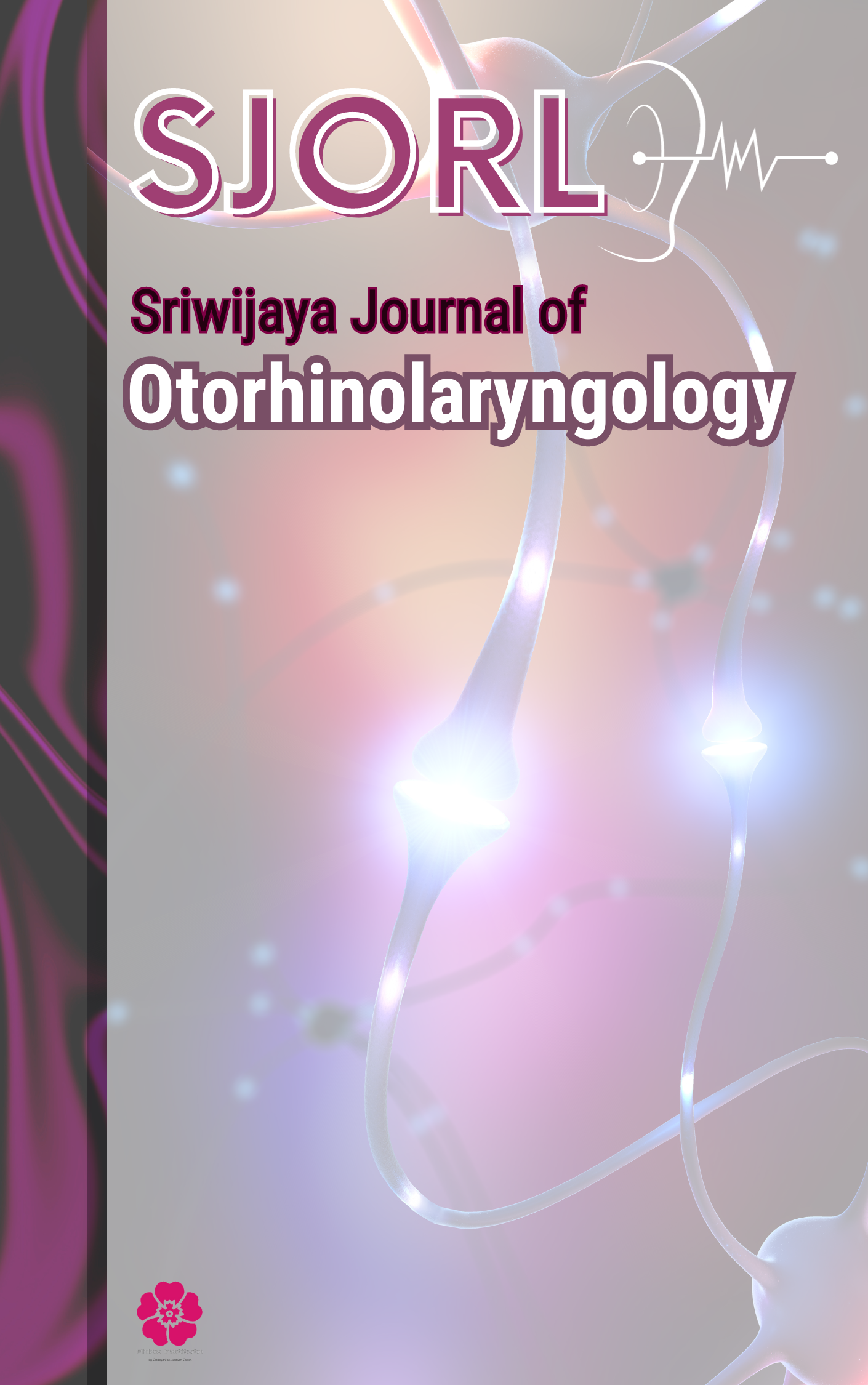Main Article Content
Abstract
Introduction: Acute otitis media (AOM) and otitis media with effusion (OME) are common pediatric illnesses with varying clinical courses. A reliable prognostic tool to predict outcomes and guide treatment decisions in the Indonesian context is lacking. This study aimed to evaluate the prognostic value of the Indonesian Otitis Media Severity Score (IOMSS) in predicting treatment response and complications in pediatric patients with AOM and OME.
Methods: A prospective cohort study was conducted at five tertiary care hospitals in Indonesia (Medan, Jakarta, Samarinda, Makassar, and Denpasar) from January 2020 to December 2022. Children aged 6 months to 12 years diagnosed with AOM or OME were enrolled. The IOMSS, which incorporates clinical findings (otalgia, fever, otorrhea, tympanic membrane appearance, and hearing loss), was calculated at baseline. Patients were followed up for 6 months to assess treatment response (resolution of symptoms, tympanic membrane healing), and the development of complications (e.g., recurrent AOM, chronic suppurative otitis media (CSOM), mastoiditis, hearing loss). Statistical analyses, including Cox proportional hazards regression and receiver operating characteristic (ROC) curve analysis, were performed to evaluate the association between IOMSS and clinical outcomes.
Results: A total of 850 children (mean age 5.2 ± 2.8 years, 55% male) were included. Higher IOMSS scores at baseline were significantly associated with a lower probability of complete resolution of AOM/OME at 6 months (hazard ratio [HR] 0.85 per 1-point increase in IOMSS, 95% CI 0.80-0.90, p<0.001). The IOMSS also predicted the development of complications, with a higher score significantly increasing the risk of recurrent AOM (HR 1.20, 95% CI 1.10-1.31, p<0.001), CSOM (HR 1.35, 95% CI 1.18-1.54, p<0.001), and persistent hearing loss (HR 1.28, 95% CI 1.12-1.46, p<0.001). ROC curve analysis demonstrated good discriminatory ability of the IOMSS for predicting complications (AUC = 0.82, 95% CI 0.78-0.86).
Conclusion: The IOMSS is a valuable prognostic tool for predicting treatment outcomes and the risk of complications in Indonesian children with AOM and OME. Its use can aid clinicians in identifying high-risk patients who may benefit from more aggressive management and closer follow-up.
Keywords
Article Details
Sriwijaya Journal of Otorhinolaryngology (SJORL) allow the author(s) to hold the copyright without restrictions and allow the author(s) to retain publishing rights without restrictions, also the owner of the commercial rights to the article is the author.

